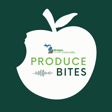
Hydroponics and Food Safety
This episode features Gianna Costa, Food Safety Quality and Assurance Manager for Square Roots indoor farm, and Phil Tocco, a statewide Produce Safety Educator with Michigan State University Extension. They talk about how Square Roots works as an indoor growing operation, how they mitigate food safety hazards, and how they build a culture of food safety.
Square Roots website: https://www.squarerootsgrow.com/
SQR Instagram: https://www.instagram.com/squarerootsgrow/?hl=en
SQR Twitter: https://twitter.com/squarerootsgrow
SQR LinkedIn: https://www.linkedin.com/company/square-roots-urban-growers/
Funding for this podcast was made possible in part by the Food and Drug Administration through grant PAR-16-137. The views expressed in the posted materials do not necessarily reflect the official policies of the Department of Health and Human Services, nor does any mention of trade names, commercial practices or organization imply endorsement by the United States Government.

